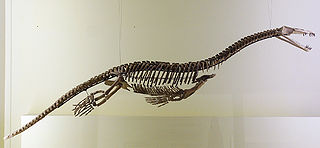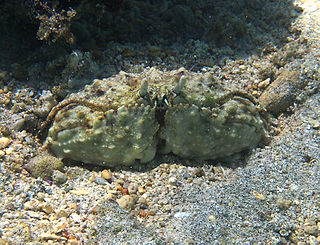
Dendrobium is a genus of mostly epiphytic and lithophytic orchids in the family Orchidaceae. It is a very large genus, containing more than 1,800 species that are found in diverse habitats throughout much of south, east and southeast Asia, including China, Japan, India, the Philippines, Indonesia, Australia, New Guinea, Vietnam and many of the islands of the Pacific. Orchids in this genus have roots that creep over the surface of trees or rocks, rarely having their roots in soil. Up to six leaves develop in a tuft at the tip of a shoot and from one to a large number of flowers are arranged along an unbranched flowering stem. Several attempts have been made to separate Dendrobium into smaller genera, but most have not been accepted by the World Checklist of Selected Plant Families.

Salamandridae is a family of salamanders consisting of true salamanders and newts. Salamandrids are distinguished from other salamanders by the lack of rib or costal grooves along the sides of their bodies and by their rough skin. Their skin is very granular because of the number of poison glands. They also lack nasolabial grooves. Most species of Salamandridae have moveable eyelids but lack lacrimal glands.

Ranunculus is a large genus of about 1700 to more than 1800 species of flowering plants in the family Ranunculaceae. Members of the genus are known as buttercups, spearworts and water crowfoots.

Xanthocyparis is a genus of cypresses in the family Cupressaceae. As of August 2021, it has only one species, Xanthocyparis vietnamensis, native to Vietnam and southeast China. It is commonly known as the Vietnamese golden cypress. The Nootka cypress, Cupressus nootkatensis or Callitropsis nootkatensis, was also placed in the genus, but this has been rejected.

Ko Tao is an island in Thailand and is part of the Chumphon Archipelago on the western shore of the Gulf of Thailand. It covers an area of about 21 km2. Administratively it is a subdistrict (tambon) of Ko Pha-ngan District (amphoe) of Surat Thani Province. As of 2006, its official population was 1,382. The main settlement is Ban Mae Haad.

The Styracaceae are a small family of flowering plants in the order Ericales, containing 12 genera and about 160 species of trees and shrubs. The family occurs in warm temperate and subtropical regions of the Northern Hemisphere.

Nothosaurus is an extinct genus of sauropterygian reptile from the Triassic period, approximately 240–210 million years ago, with fossils being distributed from North Africa and Europe to China. It is the best known member of the nothosaur order.

Calappa is a genus of crabs known commonly as box crabs or shame-faced crabs. The name box crab comes from their distinctly bulky carapace, and the name shame-faced is from anthropomorphising the way the crab's chelae (claws) fold up and cover its face, as if it were hiding its face in shame.

Shigella boydii is a Gram-negative bacterium of the genus Shigella. Like other members of the genus, S. boydii is a nonmotile, nonsporeforming, rod-shaped bacterium which can cause dysentery in humans through fecal-oral contamination.

The China men's national basketball team represents the People's Republic of China in international basketball tournaments. The national team is governed by the Chinese Basketball Association (CBA). Based on the number of tournament titles, China is considered a major basketball powerhouse in Asia and has by far the most successful basketball program on the continent.

The inquisitive shrew mole is a species of mammal in the family Talpidae. It is only known from Yunnan province of China, although its range is thought to extend over the border into Myanmar.
Pyrenaria is a genus of flowering plants in the family Theaceae.

Ercaicunia is genus of bivalved Cambrian arthropod from the Chengjiang biota of Yunnan, China. It contains a single species, E. multinodosa that was described by Luo et al. in 1999. The total length of the body ranges from 8 to 11 millimetres. The bivalved carapace covered about a third of the total body-length, and has up to six serrations on its forward edge. The head has a pair of large uniramous antennae, as well as a smaller pair of secondary antennae, as well as pair of mandibles and maxillae. The trunk has 16 pairs of biramous appendages. Specimens were CT scanned in 2019, which suggested it to be a stem-group crustacean. Other subsequent studies have recovered it as a member of Hymenocarina, which contains other bivalved Cambrian arthropods.

Saurosphargidae is an extinct family of marine reptiles known from the Early Triassic and early Middle Triassic of Europe and China.

Candona is a genus of ostracods in the family Candonidae.
Randallia is a genus of true crabs in the family Leucosiidae. There are about 17 described species in Randallia.
Cytherella is a genus of seed shrimp in the family Cytherellidae.
Neocandona is a genus of ostracods belonging to the family Candonidae.

Zhangixalus is a genus of frogs in the subfamily Rhacophorinae, family Rhacophoridae. They are collectively known as Zhang's treefrogs. They occur in the Eastern Himalayas, southern China, Taiwan, Japan, and southeast Asia.














